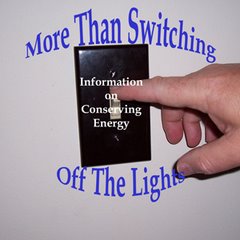Myth: An idle computer doesn’t use much energy.
Once a computer is on and operating there is little change in the amount of energy it uses while idle or when doing complex calculations. Another part of this myth deals with screen savers. Screen savers do not save energy unless they shut the monitor off or into stand-by mode. A monitor can use 50% or more of the energy used by the computer system and shutting it off when not needed can save a measurable amount of energy.
Myth: It’s harmful to the computer to be turned off and on.
This one of those ideas that once was true is no longer. Early computer technology was such that the shut down and start up of certain parts, especially a computer hard drive, would effect the life of that component. Technology has advanced and now while turning it off and on may shorten life, but the life has increase so much that the device will no longer be in use before that happens.
Myth: It takes more energy to raise or lower the temperature in the house than keeping it constant.
Many people won’t vary the thermostat temperature setting when they are away because of this myth. This turns out to be an easy way to save energy. You also don’t need to adjust the thermostat beyond the temperature you desire upon returning. It won’t make it get there quicker and if you forget to adjust it later, you would actually be using more energy.
Myth: Compact Fluorescent Light Bulbs have poor light quality, makes noises and takes time to turn on.
When people think of fluorescent lights they think of the lights in office buildings. The newer CFL bulbs are available in many different shapes and sizes. You can now easily purchase bulbs that deliver the same quantity and quality of lights of 25-125 watt incandescent bulbs. These bulbs use a lot less electric than their incandescent cousins as well as generating a lot less heat. They are quick starting, usually not noticeable, and run quiet.
Myth: Fluorescent lights use more energy in starting than leaving them on.
There is a slight surge of electric when turning a fluorescent light on, but that amount of energy would be equal to a short period of time. It depends on the type of starter, but it’s usually less than a few seconds. The part of this myth that rings some truth deals with the replacement cost of the light. The life of the bulbs is shorten by turning them off and on. One thought is that if the lights won’t be needed for 15 minutes or more it’s best to turn them off.
Myth: Higher costs negate any savings.
It’s true that many energy savings devices may be more costly than their usually used cousins, but in most cases the energy costs saved during the life of the product is great deal more than the added cost. It’s either pay now or pay later.
Myth: Off is no energy used.
In truth many modern appliances may be using as much as 15 to 30 watts when off or in Stand-by mode. Some may actually be using the same amount of energy off as they are when on.
© 2007 Steven G. Atkinson – All Rights Reserved
Subscribe to:
Post Comments (Atom)

No comments:
Post a Comment